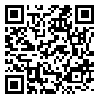Wed, Dec 17, 2025
[Archive]
Volume 9, Issue 1 And 2 (6-2017)
IJDO 2017, 9(1 And 2): 20-24 |
Back to browse issues page
Download citation:
BibTeX | RIS | EndNote | Medlars | ProCite | Reference Manager | RefWorks
Send citation to:



BibTeX | RIS | EndNote | Medlars | ProCite | Reference Manager | RefWorks
Send citation to:
Modaresi J, Afkhami-Ardekani M, Mokhtari F, Salmani-Qahyazi A, Amirzade-Iranaq M H. The Comparison of Tooth Pulp Electrical Threshold in Patients with Type II Uncontrolled Diabetes and Healthy Subject. IJDO 2017; 9 (1 and 2) :20-24
URL: http://ijdo.ssu.ac.ir/article-1-336-en.html
URL: http://ijdo.ssu.ac.ir/article-1-336-en.html
Jalil Modaresi 
 , Mohammad Afkhami-Ardekani
, Mohammad Afkhami-Ardekani 
 , Fatemeh Mokhtari
, Fatemeh Mokhtari 
 , Alireza Salmani-Qahyazi *
, Alireza Salmani-Qahyazi * 
 , Mohammad Hosein Amirzade-Iranaq
, Mohammad Hosein Amirzade-Iranaq 


 , Mohammad Afkhami-Ardekani
, Mohammad Afkhami-Ardekani 
 , Fatemeh Mokhtari
, Fatemeh Mokhtari 
 , Alireza Salmani-Qahyazi *
, Alireza Salmani-Qahyazi * 
 , Mohammad Hosein Amirzade-Iranaq
, Mohammad Hosein Amirzade-Iranaq 

Student, Student Research Committee, Shahid Sadoughi University of Medical Sciences, Yazd, Iran.
Abstract: (3909 Views)
Objective: Diabetic patients suffer from different types of complications associated with peripheral nerves. A clear manifestation of these complications is found in the mouth where neuropathies commonly occur. The measurement of electrical stimulation threshold of teeth signifies premature involvement of peripheral nerves in the teeth. The aim of present study is to compare pulp tester response in uncontrolled type II diabetic (T2DM) patients and people with normal systemic conditions.
Materials and Methods: In this case-control study, 63 subjects in two groups of diabetic patients (n=30) and control (n=33) were studied. For each group, the electrical stimulation thresholds of higher-jaw central teeth were measured and recorded. The collected data was analyzed via SPSS Software (version. 17). The difference between mean thresholds of electrical stimulation of teeth between the two groups was verified based on T-test. In addition, Chi-square test was used for determination of association between qualitative variables. In this study, the significance level was presumed to be P-value<0.05.
Results: The mean threshold of electrical stimulation in diabetic patients was 3.8 with standard deviation (SD) 1.01 and in control group was 3.7 (±0.9). The difference between two groups was insignificant (P-value:0.483). In addition, the association between age and threshold of stimulation was not significant (P-value:0.06). Conclusion: Despite of observed difference between test and control groups in regard to electrical stimulation threshold, the obtained results were insignificant. This extent of simulation in dental nerves in patients with uncontrolled T2DM and controls was similar.
Materials and Methods: In this case-control study, 63 subjects in two groups of diabetic patients (n=30) and control (n=33) were studied. For each group, the electrical stimulation thresholds of higher-jaw central teeth were measured and recorded. The collected data was analyzed via SPSS Software (version. 17). The difference between mean thresholds of electrical stimulation of teeth between the two groups was verified based on T-test. In addition, Chi-square test was used for determination of association between qualitative variables. In this study, the significance level was presumed to be P-value<0.05.
Results: The mean threshold of electrical stimulation in diabetic patients was 3.8 with standard deviation (SD) 1.01 and in control group was 3.7 (±0.9). The difference between two groups was insignificant (P-value:0.483). In addition, the association between age and threshold of stimulation was not significant (P-value:0.06). Conclusion: Despite of observed difference between test and control groups in regard to electrical stimulation threshold, the obtained results were insignificant. This extent of simulation in dental nerves in patients with uncontrolled T2DM and controls was similar.
Type of Study: Research |
Subject:
Special
Received: 2017/11/6 | Accepted: 2017/11/6 | Published: 2017/11/6
Received: 2017/11/6 | Accepted: 2017/11/6 | Published: 2017/11/6
| Rights and permissions | |
 |
This work is licensed under a Creative Commons Attribution-NonCommercial 4.0 International License. |



